Thanksgiving Cactus Vs Christmas Cactus (Main Differences)
Let’s discuss the difference between Christmas cactus vs Thanksgiving cactus so you’ll be able to identify which holiday bloomer is showing up at your party!
The bright blooming flower buds of holiday cactus add festive cheer during the holiday season. While these two plants are similar, you may be wondering just what kind of cactus you have.

Similar in appearance and growth habit, Christmas cactus and Thanksgiving cactus are often confused with one another. They are marketed and sold as the same plant in late fall. But, they are two different succulents from the same genus.
Thanksgiving cactus and Christmas cactus are different varieties of the genus Schlumbergera and have the same growing habits.
They both crave bright light and are short-day plants, meaning they need a period of increased hours of darkness to promote blooms.
Even if you are not sure which type of plant you have, you can confidently apply the same care to both plant varieties.
Main Differences
The main difference between these two tropical plants lie in the leaf appearance and shape, the color of the pollen, shape of the flower, and bloom time.
In Latin, a Thanksgiving cactus is Schlumbergera truncata, and a Christmas cactus is schlumbergera x buckleyi. We’ll refer to them by their common names for easy reference. (A third holiday cacti is the Easter cacti, or Rhipsalidopsis gaertneri).
Look At The Leaf Shape
To figure out which type of plant you have, first look at the leaf segments that cascade down the succulent.

The most obvious difference between these two holiday plants: the shape at the end of their stem segments. The botanical name for the stem segment is a clade.
The ends of Thanksgiving cactus stem segments are sharp and pointed, almost claw like, earning this plant the nickname of “crab cactus”. The leaves are broad and larger than their Christmas cacti cousin.
Christmas cactus, on the other hand, have scalloped or rounded shaped leaf tips. Additionally, their leaves are smaller and flatter.
(Easter cacti, another popular holiday cactus that blooms in early spring, have flat, scalloped leaves).
These are subtle differences, but once you start looking closely at holiday cacti you will quickly recognize the different leaf shapes.
Get our guide to growing Thanksgiving cactus here.
Flower Differences
Another clue to look for when differentiating between these two holiday cacti is the actual flower bloom.

Thanksgiving cactus blooms unfurl in an upright or horizontal position and have irregular sized flowers which unfold backwards toward the leaf stem. They truly do look like vibrant holiday fireworks!
If you look at the Thanksgiving flower, you’ll see pollen-bearing anthers springing forth from the center of the flower. These anthers are thin, long, and white. They boast yellow pollen at their ends.
In contrast, the flowers on Christmas cactus blooms have pollen that is usually slightly brown to pink in shade (some call it purple). The shape of the flower also differs: the flower droops down and each layer of petals is symmetrical.
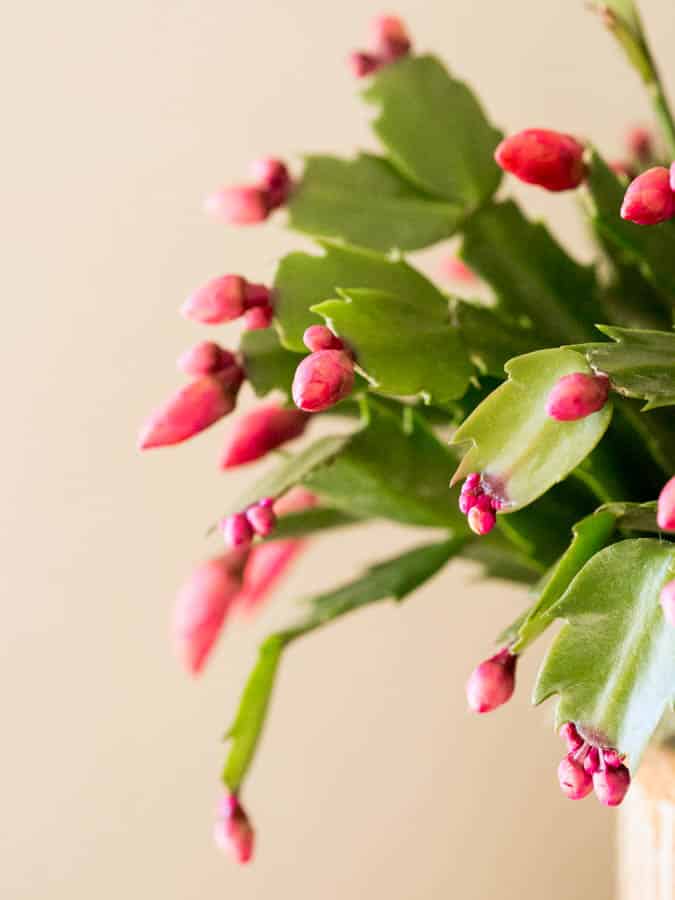
On both plants, you’ll find a variety of flower colors available in vibrant shades of pink, red, white, orange, and golden-pink. There are even tones that look almost champagne in color (talk about a celebratory plant!).
Thanksgiving cacti are the most commonly sold holiday cactus in the United States. They are sometimes referred to as “false Christmas cactus” and have sharp, pointed clades or leaf stems. Christmas cactus flowers are more rare, and this type of cactus can be passed down from friends, boutique garden centers, and private sellers. They can easily be propagated but must be sought out.
Is your Christmas cactus damaged from overwatering? Read this!
Bloom Time
The two different succulents boast beautiful flowers that bloom around the holiday season. While not as reliable, the bloom time can also be a clue on what type of plant you have.

Typically speaking, a Thanksgiving cacti will bloom earlier in the season, around the United States holiday of thanksgiving. A Christmas cacti will bloom later in the year, in late December around the Christmas holiday.
These plants both need cool temperatures and long hours of darkness to bloom.
Though known for their season blooms, the fantastic shlumbergera plants can actually bloom twice: once in the fall months and again in the spring.
Exact bloom times will vary based on growing conditions, local environment, and the specific zone they are grown in.
When healthy, these tropical plants have a fall blooming period that spans from early fall through early winter. These are typically the months of October through January.
Depending on care and growing environment, blooms can last up to eight weeks.

Thanksgiving cactus are marketed as Christmas cactus early in the season at garden centers and big box stores. So it’s easy to confuse a crab claw cactus with a true Christmas cactus as they are sold interchangeably.
Similarities + Growing Care
How do you take care of a Christmas or Thanksgiving cactus?
Traditionally hailing from the rain forests of Brazil, you can confidently give both of these plants the same care. They are both succulents from the same genus.
Since they are used to growing beneath a shaded jungle canopy, harsh light will create problems for the plant. They enjoy bright indirect light, and too much direct sunlight can burn the leaves of the plants.
Holiday cacti enjoy a moderately high humidity level of 55 to 65%.
Soil needs to be a loose, well draining growing medium.
Let the soil dry out between watering, but make sure to water regularly. Too much water and soggy soil can lead to root rot.
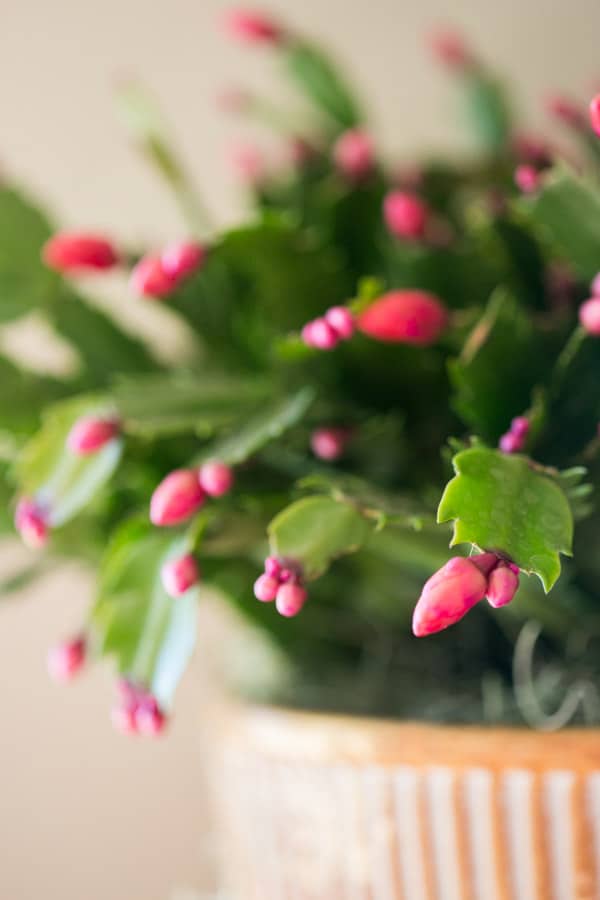
In order to bloom, these plants need long nights and must have around 12 hours of total darkness each day. If need be, the blooming season can be artificially stimulated by placing the plant is a dark area or covering it with a loose bag to reduce day length.
The growing environment, including the light source and day length, will affect time of bloom.
Get our complete guide to growing Thanksgiving cactus here.
Thanksgiving Cactus Vs Christmas Cactus: Summary
In summary, look for these differences when determining what type of holiday cacti you have:
- Thanksgiving cacti have sharp, pointed ends to their leaf segments. Christmas cacti have rounded ends to the leaf segments.
- The flowers of a Thanksgiving cacti point up or out horizontally, and are irregular. Christmas cacti droop down and are symmetrical in shape.
- While not as reliable, bloom time can be indicative of plant type. Look at bloom time in tandem with the popular winter holidays as a rough reference for what kind of plant you have.
- Thanksgiving cactus are popularly sold in the US, Christmas cactus are harder to find!

Holiday cacti are beautiful succulents that bring added joy to the winter season.
We hope this guide helps you differentiate between Thanksgiving Cactus and Christmas cactus, and you are able to use the subtle clues between the two plants as your guide.
As always, use the comment box to leave us any thoughts or questions!

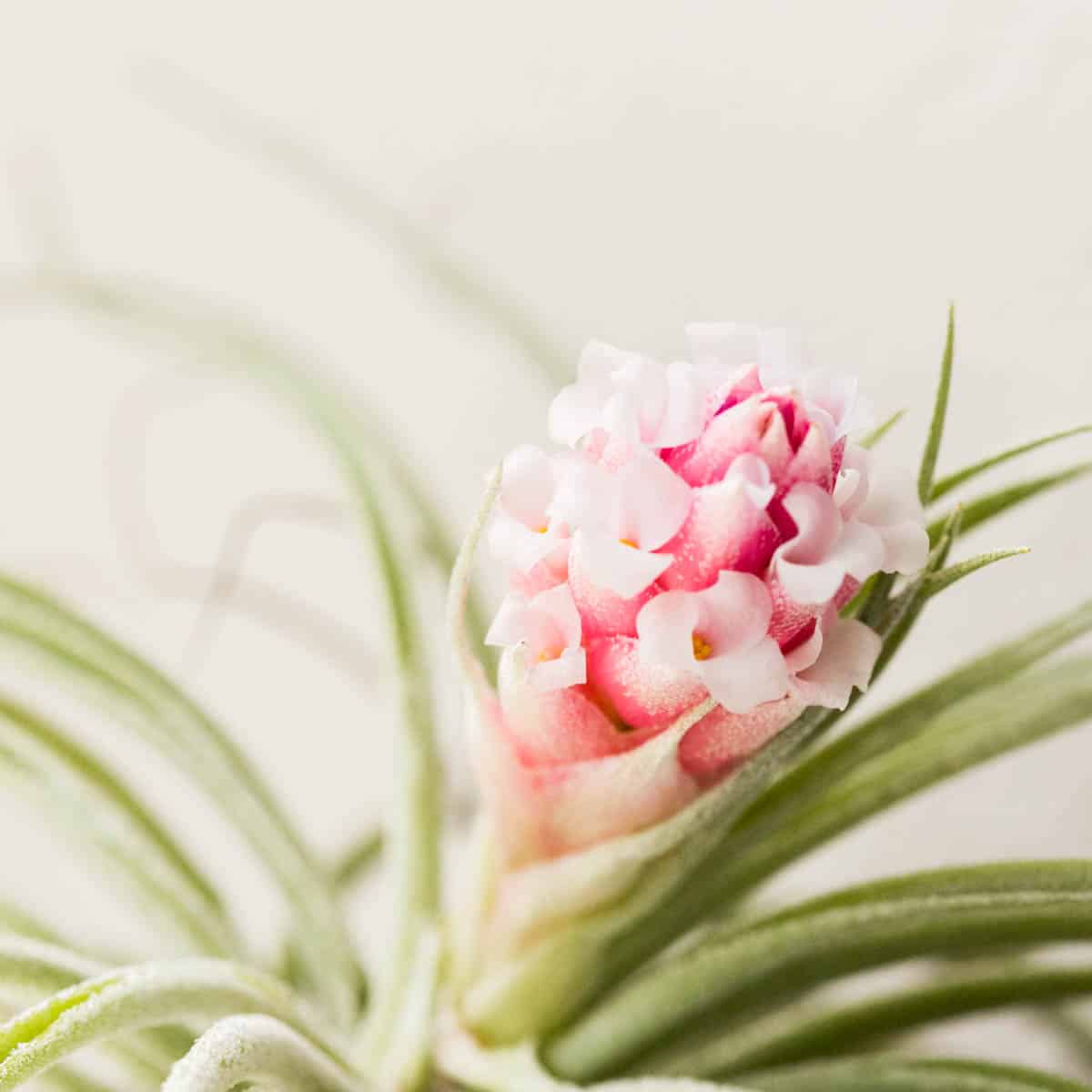

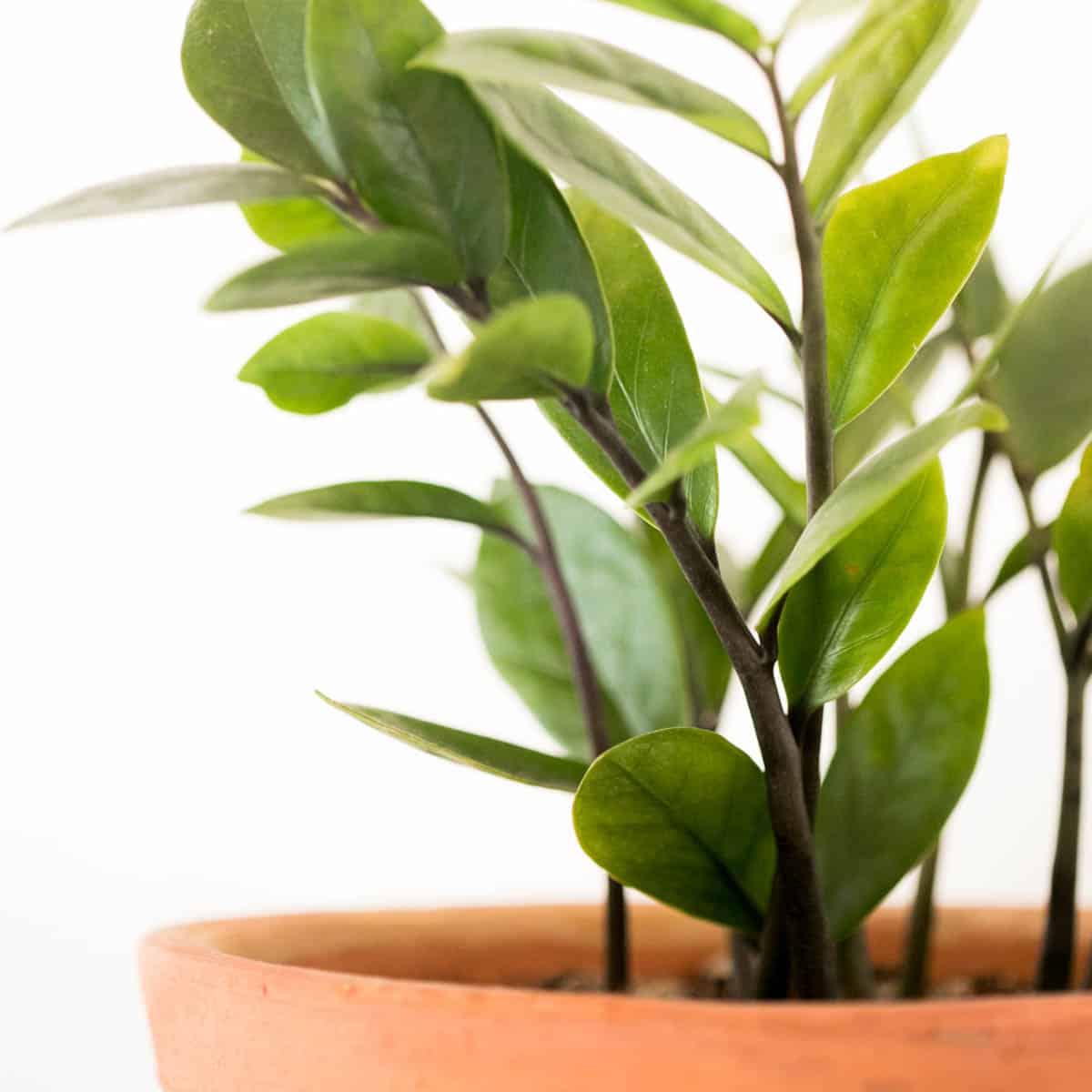
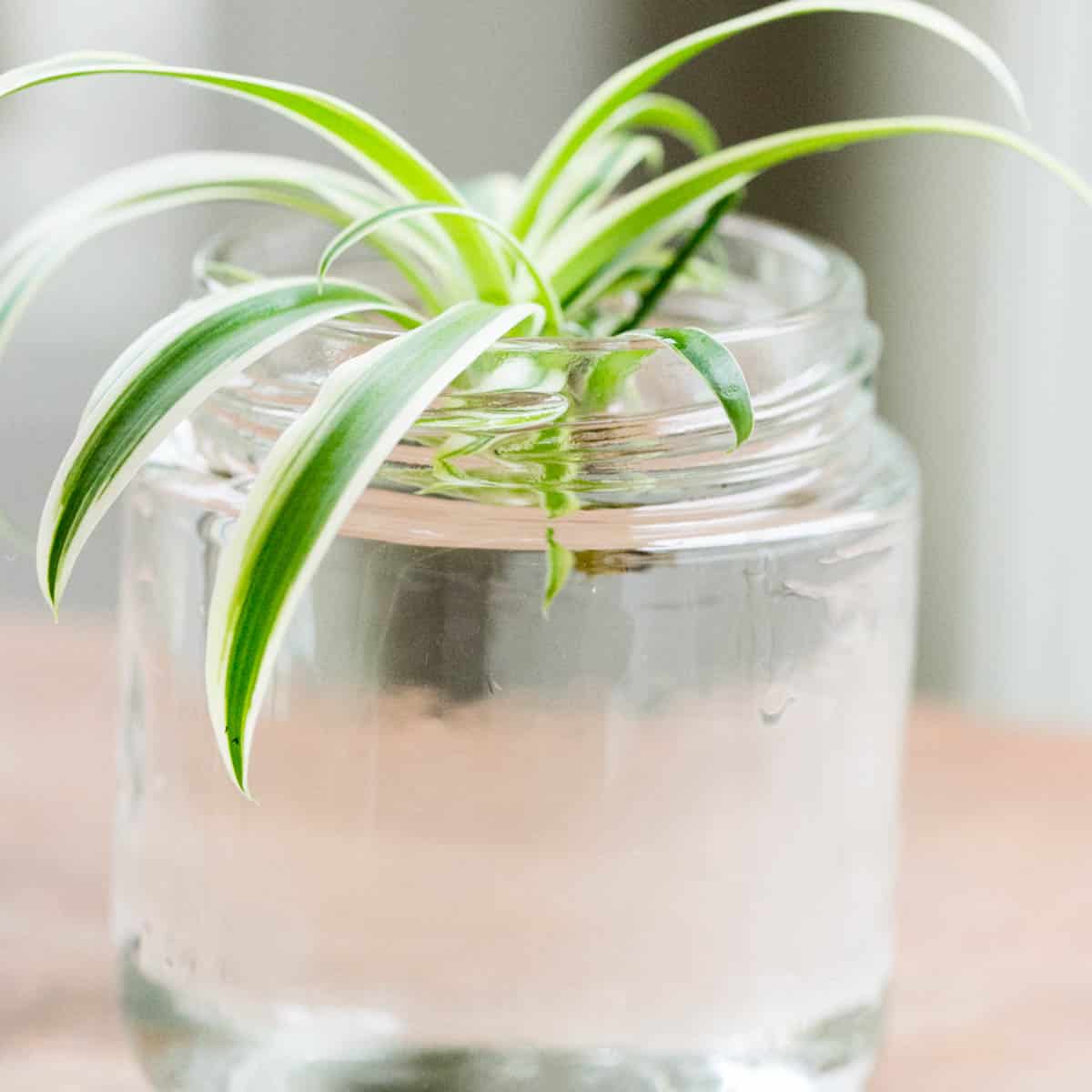

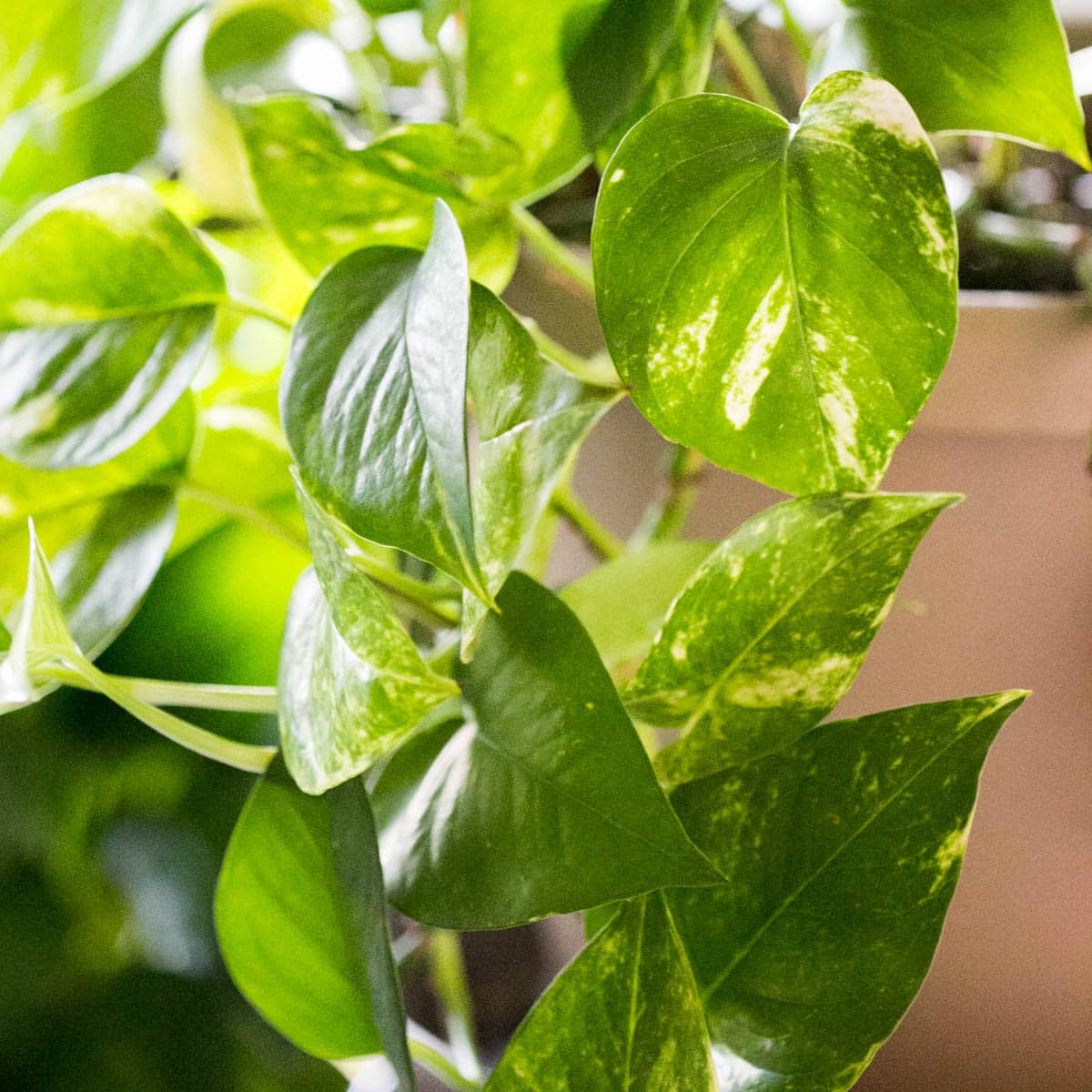
This is great, thank you ,Till now. I have always thought yellow leaves meant too much water, so thank you for the correct input!
Sincerely
Mary
Finally, a clear and concise description between Thanksgiving and Christmas cactus plants.
Thank you,
Carolyn
Thank you so much for your feedback Carolyn. That means so much to me and I’m glad you found it helpful!
I was planning on getting a colorful Thanksgiving or Christmas cactus to add more holiday color to my living room!
Now I don’t know which to shop for, as they both have good selling points! I guess I will pick a nice one when I see it!
Hi Nancy. They are both truly beautiful! If you are looking for a true Christmas cactus you can try a local houseplant boutique or Etsy. They can be hard to find, be sure to let me know if you spot one!
Thank you for this break down of information. I always wondered why my cactus bloomed by the time Thanksgiving arrived!
I’m glad you found this useful Gerri! I hope you enjoy your holiday cacti this year and have a wonderful season.
I have a thanksgiving cactus I’ve done my reading on the cactus and it says if you put it out side in the cool night are in the fall it will trick the plant in to Blooming so this year I’ve done that i did that 2 weeks ago and the plant is now blooming it doesn’t need 16in the dark
Hi Pauline,
Yes, you are right, you don’t necessarily have to “put” your cactus in the dark. However, these plants do need a period of extended daily darkness to produce blooms, which is about 12-14 hours. My moms cactus set it’s blooms with about 12 hours of darkness- 6 pm to 6 am. This also depends on your zone- if I put my cactus outside in fall where I live, the frost would immediately kill it. Thank you so much for sharing your experience!
Thank you for explaining the difference. Very helpful. I appreciate it.
Hi Kelley!
You’re so welcome! Thanks for reading!
I have had great luck with early blooms for several years now. I set my whole collection of cacti out on my covered porch every summer and bring them back inside when the evenings start to chill. Within the month I have every plant setting buds and all are in bloom by mid-November!
Hi Rosemary! This sounds like the perfect strategy! It’s so good to hear people’s experiences, thank you for sharing!
Thanks for being clear and correct! Too many articles about these cacti are way off!
Very good summary.
TVB
Oh, this means so much to me thank you. In addition to personal experience, I do a lot of research to try to get accurate info out there. And yes, there is a lot of confusion about holiday cacti! Thank you so much for your feedback!